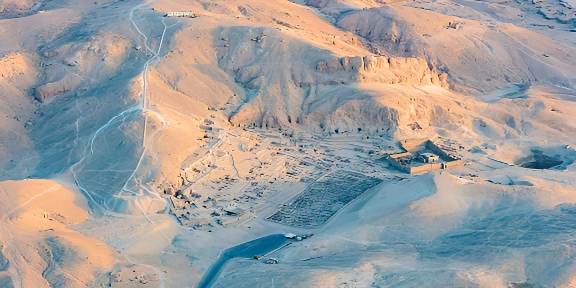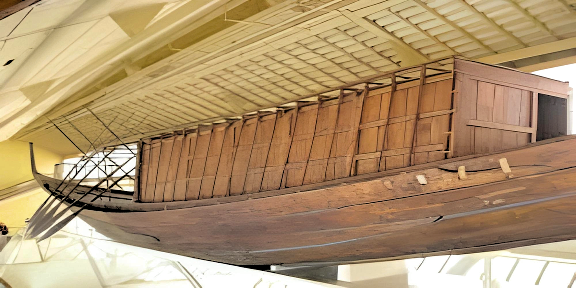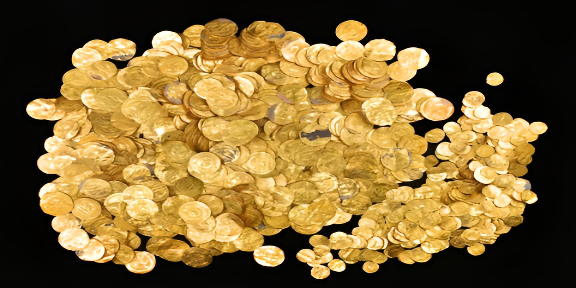Captivating Narratives
Egypt, a land steeped in ancient mysteries and captivating history, has long been a focal point of fascination for scholars, explorers, and adventurers alike. Beyond its iconic pyramids, pharaohs, and hieroglyphs, there exists a rich tapestry of hidden narratives and unexplored dimensions of Egyptian culture and society. Among these hidden treasures are the queer discoveries of Egypt, a realm of historical and archaeological revelations that illuminate the diverse expressions of this ancient civilization. Part two in this series presents five more queer discoveries of ancient Egypt beginning with number ten on the list.
Number Ten – A Water Tunnel

While a water tunnel may not initially appear as the most captivating ancient site, its historical context renders it one of the most remarkable discoveries of antiquity. Situated approximately 20 meters beneath the Temple of Osiris near Alexandria, Egypt, lies a water tunnel. This 1300-meter-long and two-meter-tall passage served its purpose by transporting water. It is believed to have functioned as an aqueduct for over a millennium, delivering drinking water to numerous individuals.
Beyond its utilitarian role, the water tunnel has sparked considerable curiosity. On one hand, it has been hailed as a geometric marvel. Remarkably, it is an exact replica of Greece’s Eupalinos Tunnel, deemed one of antiquity’s most significant engineering achievements. On the other hand, the tunnel holds a collection of unusual artifacts. Among these finds are two alabaster heads, one potentially depicting a king and the other an unknown notable figure. Additionally, the tunnel houses various coins and statues of Egyptian deities. These enigmatic inclusions raise questions about the tunnel’s purpose. Adding to the intrigue, the temple is situated near a location believed to be the final resting place of the famed Mark Antony and Cleopatra. Consequently, ongoing excavations are likely to delve further into unraveling these mysteries.
Number Nine – The Judean Exodus

In biblical accounts, the narrative of the Jews departing Egypt holds a crucial place in the Old Testament. However, the historical foundation of this story remains somewhat ambiguous. Even Jewish scholars debate the feasibility of claims that around 600,000 individuals traversed the Sinai Desert during the Exodus. Nonetheless, certain discoveries have contributed to a clearer understanding. Ancient Egyptian documents hint at the movements of small Semitic-speaking groups into and out of Egypt during the 18th and 19th dynasties. These could have been enslaved individuals who later migrated to Israel, carrying their Exodus story and interweaving it with the broader Jewish history.
A hymn book attributed to Pharaoh Akhenaten has also been discovered, showing striking parallels with Psalm 104 of the Hebrew Bible. While the Egyptian version was intended to honor the sun god Aten, some scholars speculate on connections between this hymn and a potential Jewish Exodus. Moreover, a horde of rare Egyptian coins dating to the reign of Ptolemy VI was unearthed in the Judean desert, potentially indicating a Jewish migration to the region. Although inconclusive, these fragments of evidence hint at the possibility of a genuine Jewish Exodus from ancient Egypt.
Number Eight – Deir el-Medina
While not a household name, Deir el-Medina holds immense significance in the annals of Egyptology. Between 1905 and 1909, Ernesto Perelli initiated the site’s exploration, followed by Bernard Bruyère’s French team between 1922 and 1951. Their findings were nothing short of astonishing. This town accommodated 68 houses, housing the craftsmen responsible for constructing the royal pyramids. This middle-class community left behind a wealth of records detailing daily life. Craftsmen worked in shifts of six days on and two days off, residing close to their workplace. In contrast to the prevailing norm, the residents were largely literate, capable of reading and possibly writing—a notable distinction during that era.

Given their expertise in tomb construction, the craftsmen created their own tombs during leisure time. These tombs are among the most exquisite commoner tombs in ancient Egypt. Records also portray an environment of religious tolerance and extended rights for women. Interestingly, the community engaged in what is recognized as the first recorded strike action in human history. Deir el-Medina’s significance is indisputable, offering insights into ancient Egyptian society that continue to intrigue historians.
Number Seven – The Khufu Ship
While wooden ships tend to deteriorate over time, the Khufu ship defies this trend. Discovered within Pharaoh Khufu’s tomb in 1954, the ship’s 1,224 fragments were meticulously reassembled over a decade of research into ancient shipbuilding techniques. The result was awe-inspiring—a 4,500-year-old vessel measuring 43 meters in length and 6 meters in width. Astonishingly well-constructed, it could hypothetically sail even today if placed in a river or lake.

Despite its impressive attributes, the Khufu ship’s purpose remains enigmatic. Designed in the style of a solar barge, which symbolized transporting a resurrected king with the sun god Ra, the ship displays signs of having touched water. This has led to speculations that it transported King Khufu’s embalmed body from Memphis to Giza. Alternatively, some believe that Khufu himself might have used the ship during his lifetime, employing it for pilgrimages to sacred sites. Regardless of the precise role, the Khufu ship’s mystery continues to captivate, and visitors can view this remarkable artifact at the Grand Egyptian Museum in Giza.
Number Six – Protective Tattoos
While modern tattoos hold various positions on the body, ancient Egyptian women often received tattoos across their lower backs. The story unfolds as archaeologists excavated the planned worker town of Niera Medina, discovering mummies with curious tattoos. While these mummies were never fully unwrapped, partial exposure revealed peculiar tattoos across the women’s backs. These tattoos held symbolic meanings, such as depictions of the god Bess and a bowl, associated with ritual purification after childbirth. Other designs included a wedge and the Eye of Horus, along with an image of Bess wearing a feathered crown. The tattoos seemed to center around protection and healing.

Notably, these tattoos followed a zigzag pattern resembling a marsh. Given ancient medical texts associating marshes with cooling waters used to alleviate menstrual or childbirth pain, these tattoos were potentially connected to fertility and childbirth. While further research is needed, these mummies suggest that fertility-related tattoos on the lower back were possibly a prevalent practice.
